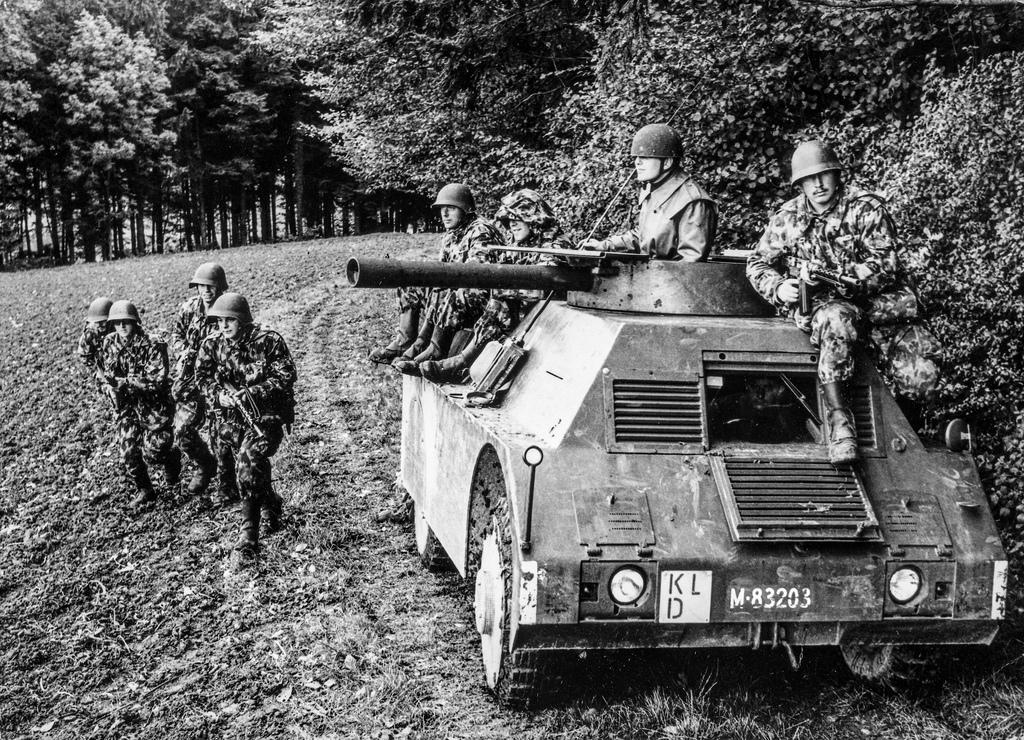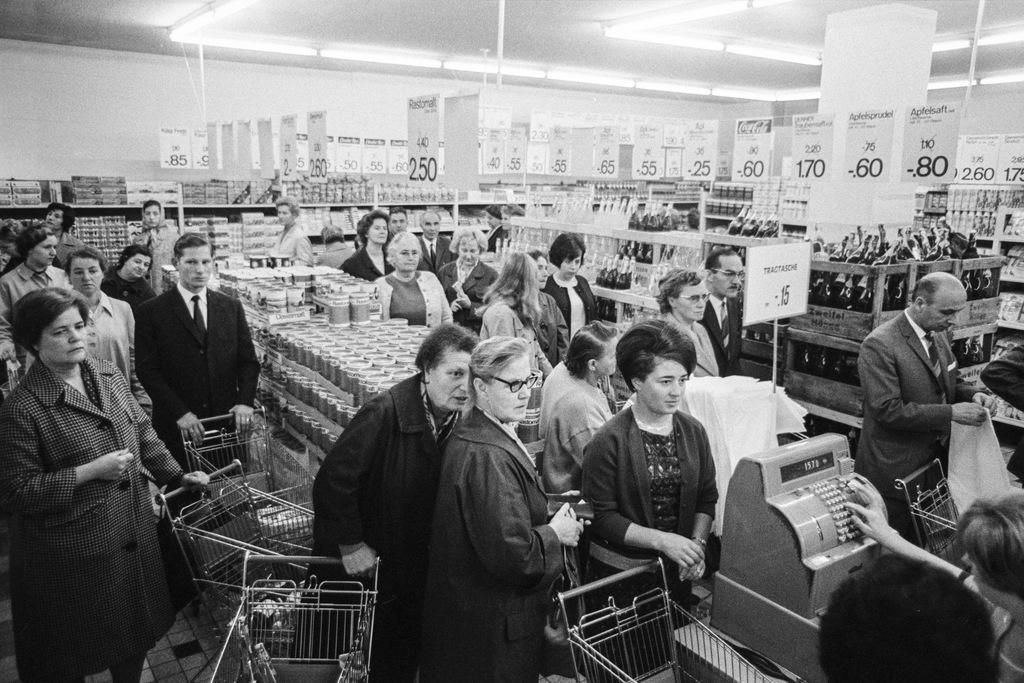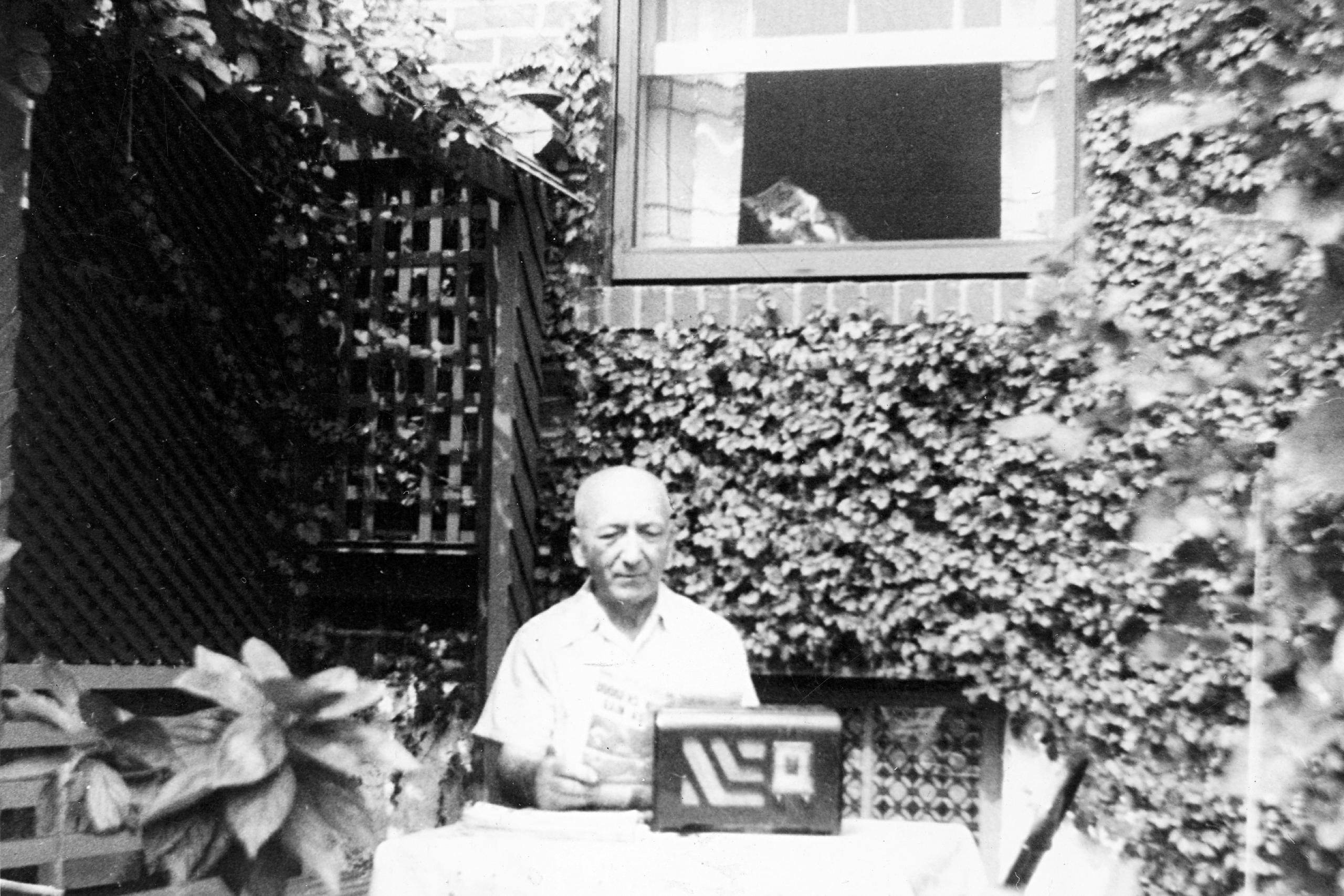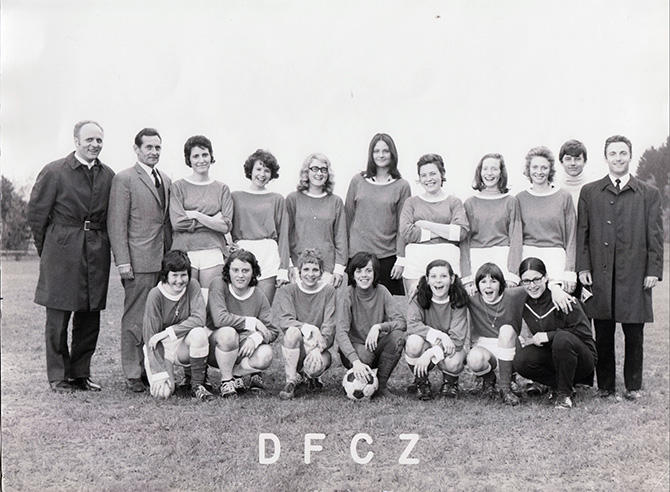An ‘imperceptible accumulation of modest question marks’

The year 1968 wasn’t a sudden revolution; instead it was a year that brought a broad range of social upheavals.
The world was progressing – but many were not particularly happy with the prosperous post-war era. In the 1950s, conservative observers, even in Switzerland, feared that consumerism and work would lead to a loss of individual identity.
The former government minister Friedrich Traugott Wahlen, for instance, complained in 1956 that modern people appeared to him to be soulless “half-machines”, with no individual characteristics. As the father of the so-called “Anbauschlacht”, a programme to make Switzerland agriculturally self-sufficient during the Second World War, Wahlen had ordered the Swiss to grow potatoes on football fields, and the war was for him a unifying memory.
After 1945, the Swiss population seemed defenceless in the face of global fashions. The fear of homogeneity concerned the pace at which the Swiss were adopting foreign trends. Women who dressed like American film stars were ridiculed as “copycats” in the satirical magazine “Nebelspalter.”
The theme of the woman who lost her connection to her roots by reading fashion magazines seems to have amused and unsettled many people at that time.
‘Anyone who thinks is a traitor’
People withdrew from the world into nostalgic fantasies. “Individualism” and “character” became national concepts. A real individual was a miner with a scythe and traditional thin cigar hanging from his lips, but definitely not a graphic designer in a trench coat. Whoever questioned this would be – paradoxically – chided as a “nonconformist.”
Those who were subject to such criticism would, however, have completely agreed with Wahlen as far as soullessness was concerned, but they saw the reasons for that elsewhere: in Swiss anti-intellectualism, in narrow-mindedness, and, as Paul Nizon later wrote, in a tendency to self-confinement. “Whoever thinks is a traitor,” Friedrich Dürrenmatt told the Swiss newspaper Blick in the mid-1960s.

A Swiss-German phenomenon
Gradually, the insult “nonconformist” became a badge of honour, but those who were proud of being thus insulted remained a loosely knit group. It was only in 1967 that there was the first highly official “Nonconformist Meeting” – but it ended with no pan-movement agreement.
Some nonconformists have become compulsory reading in schools: Peter Bichsel, Max Frisch and Dürrenmatt. The key media outlets for nonconformists were the newspapers “Zürcher Woche” and “Weltwoche”, until their owners changed in 1967 and the nonconformist slant was readjusted.
Some wrote poems, like the recently deceased Kurt Marti or Erika Burckhardt, and the productive nonconformist circle also spawned concrete poetry and painting. Others made films, engaged in philosophy, or took completely different routes: the nonconformist Sergius Golowin wrote books about esoterics and later invited the drugs advocate Timothy Leary to Switzerland. Others became involved in politics, like Arthur Villard, an anti-authoritarian teacher and military service conscientious objector from Biel.
Essentially, nonconformism remained a very Swiss-German phenomenon. According to Hans Fleig, who at that time wrote for the “Zürcher Woche”, the reason for that was that western Switzerland remained more politically flexible and open, even during the Cold War.
Against ‘ossified uniformity’
As the journalist and chronicler of the movement, Fredi Lerch writes that what united the nonconformists was a rebellion against the “ossified uniformity” of the time. The Cold War left the country paralysed. After the Hungarian Uprising in 1956, Switzerland revived the “Spiritual Defence” policy of the Second World War. Indulgence in nostalgia for the old confederation and its defiant battles was combined with radical defence measures against the heretics who were disrupting national harmony. Around 1960, any criticism of the Swiss system could be seen as creeping communist infiltration, and anyone who held uncomfortable views could be deemed part of Russia’s fifth column.
But the nonconformists had questions: Were neutrality and federalism useful? Wasn’t the army just folklore? They wanted to hold sacred cows to account and consider real alternatives, which seemed an almost impossible undertaking in this consensual democracy.
Frisch, the advertiser Markus Kutter, and Lucius Burckhardt, the inventor of strollologyExternal link, had already in the 1950s written a manifesto for the dissatisfaction of this generation born before the war. Their tract on city-building, “Attention! Switzerland”, was on the one hand a town-planning proposal: A new city should be built. On the other hand, it was a fundamental critique of the ground on which this new city should be built; an initiative to realise a Switzerland that could be understood as more than what the young men mockingly described as “a museum, a European spa resort, an old people’s home, a passport authority, a vault, a meeting place for hucksters and spies, an idyll.”
They envisaged the city they wanted to build as a counterpoint to the other imaginary villages, complete with their potato fields, that still characterise Switzerland today – the Landidörfli built for the national exhibition in 1939 and the writer Gottfried Keller’s Seldwyla, for instance.
The nonconformists cannot be clearly distinguished from the 1968-ers, but in contrast, they certainly believed that things could be solved through reforms and argumentative criticism. Kutter put his finger on a view shared by many when he wrote in 1959 that he favoured “an imperceptible accumulation of modest question marks” over fanfare and revolution. “Attention! Switzerland” was also a question mark – a friendly but very concrete counter-proposal on how Switzerland should present itself. The new city was to be built for the national exhibition in 1964. But the idea had no chance of being realised. A concrete hedgehog – the army pavilion showcasing Swiss defence – dominated the Expo 1964 as the symbol of an isolated Switzerland.
Suddenly, creativity counted
But a year later, Walter Mathias Diggelmann questioned the role of Switzerland in the Second World War, and described anti-communism as a form of amnesia in his novel “Die Hinterlassenschaft” (“The Legacy”). In 1966 Max Frisch argued with the famous German literature scholar Emil Staiger, who denigrated all politically engaged literature as sewage, which he said was not trying to serve society but only seeking to raise its own profile by focussing on the bizarre, sick, and psychopathic.
In 1967, Bichsel wrote “Des Schweizers Schweiz” (The Switzerland of the Swiss), a plea against the images produced by “Spiritual Defence” and in favour of opening up to the world; a plea for the concrete hedgehog to be consigned to the past. “A typical Swiss person only exists in tourism marketing,” he wrote. The nonconformist “traitors” of the post-war period laid down key issues for Switzerland in the second half of the 20th century. The journalist Hans Fleig, who also wrote for the “Zürcher Woche”, wrote that their criticism had built a “bridge from Switzerland to the rest of the world”.
In the 1960s, nonconformism shifted from being a stigma to an ideal. Predictable, straightforward biographies no longer seemed like something to strive for; instead creativity, self-fulfilment and eccentricity began to count. In 1964, for example, the women’s magazine “Annabelle” introduced its “Black Sheep Club” – a column in which it regularly gave someone an award for standing out from the crowd.

In compliance with the JTI standards
More: SWI swissinfo.ch certified by the Journalism Trust Initiative


You can find an overview of ongoing debates with our journalists here. Please join us!
If you want to start a conversation about a topic raised in this article or want to report factual errors, email us at english@swissinfo.ch.